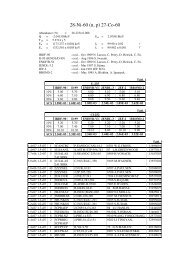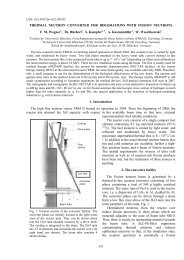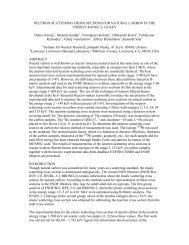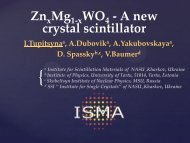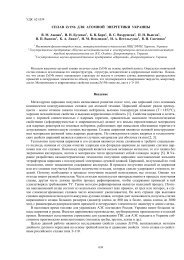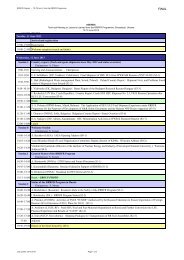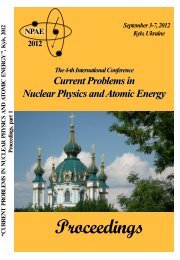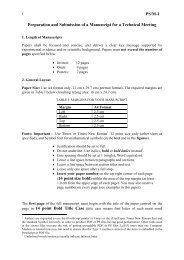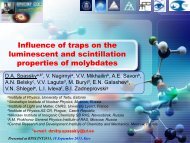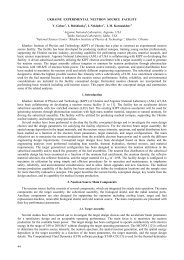International Reactor Dosimetry File 2002 - IAEA Publications
International Reactor Dosimetry File 2002 - IAEA Publications
International Reactor Dosimetry File 2002 - IAEA Publications
You also want an ePaper? Increase the reach of your titles
YUMPU automatically turns print PDFs into web optimized ePapers that Google loves.
(a)<br />
(b)<br />
(c)<br />
(d)<br />
The overall energy balance between the decay Q value and the sum of the<br />
energies of all emitted particles (including recoils);<br />
The sum of the transition intensities depopulating an excited level must<br />
be equal to the feeding of this level;<br />
The transition intensity between two excited levels has to be equal to the<br />
sum of the gamma intensity and the converted electron intensities;<br />
The total conversion coefficient must be close to the sum of the partial<br />
coefficients for the different electron shells.<br />
9.1.6. Results<br />
The most intense radiations are presented and some explanations are<br />
given in the header of the table on the CD-ROM (this information has the<br />
same title as this section, and the data in the ENDF-B6 format are included on<br />
the CD-ROM of IRDF-<strong>2002</strong>.<br />
Nine radionuclides ( 95 Zr, 97 Zr, 103 Ru, 106 Ru, 116 In m , 131 I, 132 Te, 137 Cs and<br />
144 Ce) have a decay branch leading to a daughter isomeric state. The total decay<br />
intensity in this particular mode is given together with the fractions of the<br />
decay that feed the ground and isomeric states.<br />
For approximately 25% of the radionuclides considered, the main gamma<br />
rays received special attention during the course of an <strong>IAEA</strong> coordinated<br />
research project (CRP) [9.6]. Those readers who require a more extensive<br />
evaluation of the nuclear decay data for radionuclides used as detector<br />
efficiency calibration standards should consult the final document of this CRP:<br />
Update of X-ray and Gamma-ray Decay Data Standards for Detector<br />
Calibration and Other Applications.<br />
9.2. ISOTOPIC ABUNDANCES<br />
The proportion of nuclides affected by the neutron flux is directly related to<br />
the isotopic composition of the elements. Thus these isotopic abundances are<br />
very important quantities. Three major evaluations of isotopic composition have<br />
been published over the previous ten years [9.7–9.9]. These three data references<br />
give very similar values for the isotopic abundances of the 287 stable isotopes,<br />
except for the following four isotopes, for which the deviations exceed 1%:<br />
(a) Hydrogen-2 (3.04%);<br />
(b) Xenon-124 (1.11%);<br />
(c) Osmium-187 (–1.84%);<br />
(d) Platinum-190 (–2.86%).<br />
102



